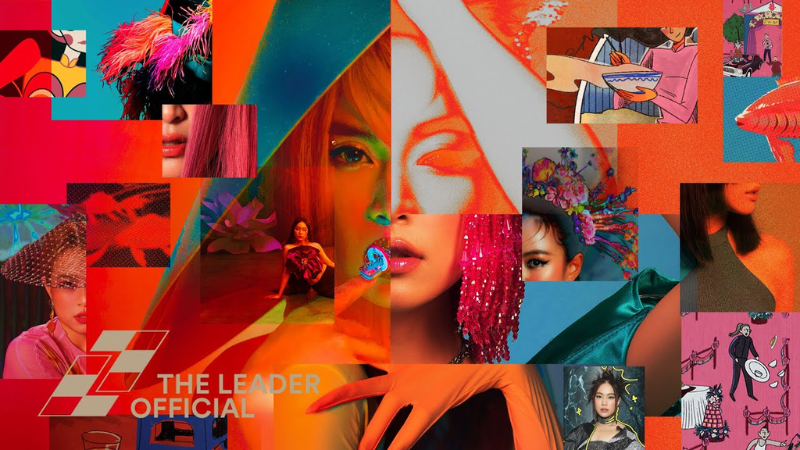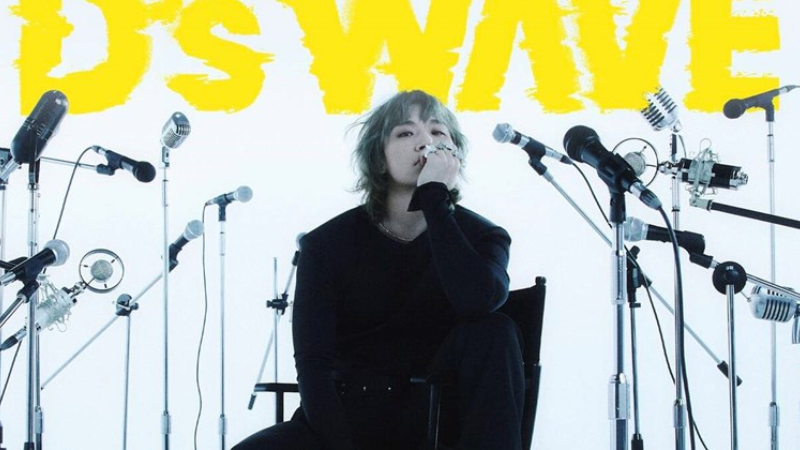Vietnamese music is transforming
21/07/25 10:23 chiều | Luợt xem : 131
In recent years, the Vietnamese music scene has witnessed a significant change as the young generation of Gen Z artists gradually dominate and reshape the music market. Born and raised in the digital age, these young talents bring a breath of fresh air with their unique creative style and effective approach to audiences through social media platforms.

HIEUTHUHAI stands out with multi-genre songs and the album “A also has to start from somewhere” has reached millions of views, making him one of the most beloved rappers today. It can be said that HIEUTHUHAI has created a new wave of music with his confident performance style and catchy rap, reflecting the true feelings of modern youth. MCK impressed with “Chím Sau” with Trung Tran and the album “99%” achieved impressive streaming results on digital platforms. MCK is particularly successful in combining rap music with R&B melodies, creating a unique and unmistakable style.

tlinh is a female rapper who emerged from the talent search program Rap Viet with a series of hits such as “Gải Độc Thân” and “ử lời rồi” attracting tens of millions of views. What is admirable about tlinh is the way she fights for feminism in an intelligent and artistic way in a field that is considered male-dominated. Or Wren Evans, with her orientation towards pursuing modern R&B music, has the MVs “Tùng Quen” and “Thích Em Hồi Nhieu” reaching tens of millions of views, helping him become a prominent indie artist. What is surprising is the way Wren Evans creates a dreamy yet realistic musical space, a rare skill in young artists. Along with a series of other artists who are still conquering domestic and international audiences thanks to the uniqueness of their music.

Fortunately, these young artists are not only commercially successful but are also improving the quality of Vietnamese music, bringing it closer to international standards. Each young artist has a different musical personality, unmistakable. Making the Vietnamese music market much more colorful than the period when only sad ballads were popular. However, their biggest challenge is probably maintaining their creativity and unique identity in a market that is easily dominated by short-term trends. However, the future of Vietnamese music with the Gen Z generation holding it is still promising and bright.
The strong rise of contemporary Vietnamese music is not only measured by the number of musical products or the diversity of genres, but is also convincingly demonstrated through the trend of exploiting and renewing traditional cultural values. The saying “When the country’s economy develops, people will return to their country’s cultural heritage” is gradually becoming a reality on the Vietnamese music map, as artists are increasingly aware of the inherent strength and unique beauty of national heritage.

In recent years, we have witnessed the rise of a wave of talented young artists who do not hesitate to incorporate folk cultural elements into their works, creating big “boosts” for the music market. The most typical example is Hoang Thuy Linh, who has created a separate “cultural universe” through songs such as “Banh Troi Nuoc” (inspired by Ho Xuan Huong’s poetry) and “De Mi Noi Cho Ma Nghe” (based on the character Mi in “Vo Chong A Phu”). According to unofficial statistics from online music platforms, Hoang Thuy Linh’s culturally-infused musical products are always among the most listened to songs, showing a warm reception from audiences, especially young people.
The ripple effect from Hoang Thuy Linh’s success has inspired many other artists. Phuong My Chi, who is already familiar to audiences through folk music, has made a creative transformation in the album “Vu Tru Co Bay”. The smooth combination of Southern folk melodies with modern music genres such as pop and R&B not only renews traditional values but also expands the audience, attracting the attention of young people who have little contact with folk music.
Hoa Minzy is also a name that cannot be ignored when mentioning this music trend. Her music products such as “Thi Mau” (inspired by the “Quan Am Thi Kinh” folk song) or “Bac Bling” (combining Quan Ho and rap images) have created unique impressions. The MV “Thi Mau” after its release quickly reached tens of millions of views on YouTube, showing the strong appeal of telling cultural stories in a modern and attractive way. The subtle combination of music, images, costumes and props imbued with cultural identity not only creates impressive visual and auditory effects but also helps young audiences easily access and remember traditional values.
However, in addition to encouraging successes, the exploitation of cultural materials in music also poses significant challenges. Without careful research and respect for the original, artists can unintentionally distort or falsify historical and cultural values. There have been mixed opinions from experts and the public about some music products using cultural elements superficially or inaccurately. This shows that caution and responsibility are extremely necessary when “putting on a new coat” for cultural heritage.
The most obvious positive change is that Vietnam is gradually becoming an attractive destination on the international performance map. Previously, the Vietnamese concert market only attracted an average of 3-4 international artists per year, mainly in the small market segment. However, since the end of 2024, the wave of reality music game shows such as “Chi Dep Dap Gio”, “Anh Trai Vuot Ngan Chong Gai” and “Anh Trai Say Hi” has created an important turning point for the Vietnamese music performance market. The post-show concerts attracted a large audience. Specifically, the third night of “Anh Trai Chong Gai” sold out after 40 minutes of opening, while the nights of “Anh Trai Say Hi” continued to attract a large audience. Proving that Vietnamese audiences are still willing to pay for quality performances.

Along with Blackpink’s extremely successful concert at My Dinh Stadium. The ticket price is highly appreciated but fans are still willing to spend a lot of money to meet their idols. Just counting these two shows alone, Hanoi’s economy has earned 13 million USD. There is more evidence that Vietnam is an ideal choice for artists who want to find a place to hold shows. This has been proven by the continuous number of Korean artists holding shows in Vietnam in the past two years such as 2NE1, Super Junior, Daesung, … In addition, the enthusiasm of Vietnamese audiences is an extremely important factor in “attracting” artists to Vietnam. For example, fans from other countries will only fanchant instead of “singing” with their idols like Vietnamese audiences. Or because of national pride, Vietnamese fans are willing to spend money to prove that Vietnam is not inferior to any other country.

However, the big challenge is that scalping is on the rise, with 45% of hot concert tickets being bought to resell at 200-300% higher prices. This situation not only causes inequality in access to culture but also distorts market data, making it difficult for organizers to accurately assess the real needs of the audience. Not to mention, Vietnamese audiences in general still do not have much interest in Vietnamese music. Simply because they do not see clearly about the shaping of the image, artists still have misleading statements and a freely developing artist market. Although there are currently management companies, in reality, the problem still exists in that artists are still the ones who directly manage the work and the company is only responsible for managing their work items. This is only suitable for the US-UK market, but in the Asian market that emphasizes the values of “truth – goodness – beauty”, it is not a good strategy.
While Vietnamese music is making great strides domestically, it has also gradually conquered international friends. Son Tung M-TP can be considered a pioneer artist, paving the way for Vietnamese music to reach out to the world. Hit songs such as “Lac Troi”, “Chay Ngay Di”, and “Hay Trao Cho Anh” not only stirred up the Vietnamese music market but also made a strong impression on international music platforms. In particular, the song “Dung Lam Trai Tim Anh Dau” excellently debuted at number 162 on the Billboard Global Excl.US chart. Proving Son Tung’s appeal on the world music map.
Hoang Thuy Linh is also a name that cannot be ignored in the development of Vietnamese music to the world. The song “See Tinh” was released in 2022, not only causing a storm in Vietnam but also resounding globally. The appeal of “See Tinh” has increased over the years, especially when the melody of this song became the background sound for more than 4 million videos on TikTok, many of which are from Korean, Chinese, and Thai users. The eye-catching dances in the MV and the harmonious combination of folk and modern music have helped “See Tinh” become a new symbol of V-pop. Even in 2023, many famous Korean dancers such as Mina Myoung, Sori Na, and many other idols also covered the choreography of this song, creating cultural waves on social networking platforms such as TikTok and Instagram.
Along with famous artists, new names like Quang Hung Master D are also making a big mark in the international market. His songs, especially songs like “Easy Come Easy Go” have been copyrighted and re-released in China with Chinese lyrics, attracting tens of millions of listens on NetEase Music and Douyin platforms. In addition, the song was also remixed and spread in Thailand, becoming a popular background music in many TikTok videos of Thai users, leading to a growing Vietnamese music-loving community in Southeast Asia.

Recently, Hoa Minzy with the song “Bac Bling” surprised the international community with her subtle application of Vietnamese culture in music. The MV “Bac Bling” is not only a blend of modern music and Northern folk culture but also a typical example of bringing local culture to the global stage. This MV quickly reached the top 1 trending on YouTube globally after its release, and received attention from many international media channels such as Nikkei Asian Review, praising it for its “creativity in recreating traditional culture through modern musical language”. This is a clear demonstration that Vietnamese artists increasingly know how to promote national cultural values and convey them into music products that are easily accessible to international listeners.
